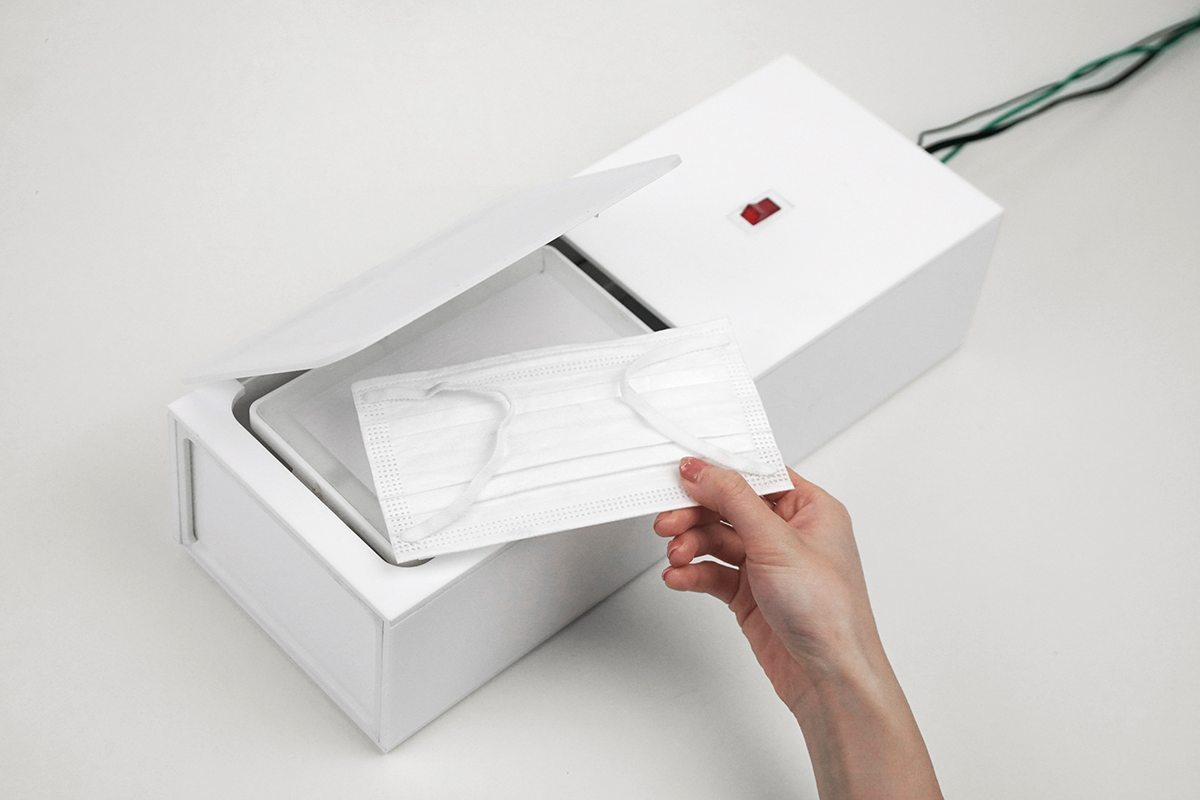
Get home, take off your mask and toss it in the bin. This daily ritual might change soon, however, thanks to scientists from the Institute of Industrial Science at The University of Tokyo.
The researchers have developed a compact system that can restore N95 respirators and surgical masks that have been exposed to moisture to 97% efficiency. By using a special circuit and a conductive plate, a large and uniform voltage distribution recharges the mask in about one minute. This machine can help address the need for high-performance masks while reducing plastic medical waste.
During the recent COVID-19 pandemic, surgical masks and N95 respirators were in high demand, because these were some of the best tools available for reducing the risk of catching or transmitting the SARS-CoV-2 virus. Remarkably, the pore size of these masks, about 10 microns, is much larger than the size of virus-carrying aerosol droplets, which are about one micron. However, the reason the masks are still so good at capturing droplets is that the polypropylene mesh inside them carries a static electric charge, which can attract the droplets via electrostatic force.
However, over time or as a mask becomes wet, this effect becomes significantly reduced, hindering effectiveness. "Humidity, including exposure to exhaled air, or washing in water removes a mask's charge and compromises its filtering efficiency," says lead author Taisuke Ikawa. As a result, most used masks were discarded, instead of being sterilized and reused.
The device built by the research team is based on an electrical circuit called a Cockcroft-Walton's voltage multiplier. This allows electrical potentials of up to 40,000 volts to be obtained in a compact device. The researchers used a conductive aluminum plate as an electrode to ensure a homogenous voltage distribution, and covered it with an insulating plastic PET board to suppress sparks.
The efficiency of the masks was tested after being washed in water; efficiency was significantly restored after brief exposure to the electric field generated by the device. "Our work raises the possibility that masks can be sterilized and recharged again and again, significantly increasing supply," says senior author Kaori Sugihara. Future research may scale up the size of the device to help increase throughput.
The article, "Development of a desktop mask charger," is published in Heliyon at DOI: 10.1016/j.heliyon.2023.e15359.
Research Contact
Kaori Sugihara, Lecturer
Institute of Industrial Science, the University of Tokyo
Tel:+81-3-5452-6341
E-mail:kaori-s (Please add "@iis.u-tokyo.ac.jp" to the end)
URL:https://sugiharalab.iis.u-tokyo.ac.jp/
